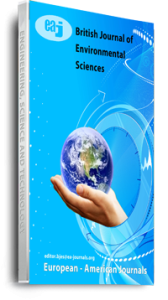Water pollution is a serious problem to the entire world. It threatens the health and wellbeing of humans, plants, and animals. With the advancement of communications and trade due to industrialization, accidental and purposive waste dumping, and uncontrolled use of water sources have contributed to the problem of water pollution in both surface water and the ground water. This study was mainly concerned with the evaluation of water quality of Malwathu Oya and its four basin tanks in the dry zone of Sri Lanka namely Nuwara wewa, Tissa wewa, Nachchaduwa wewa and Mahakanadarawe wewa in the Anuradhapura district using some selected water quality parameters. Malwathu Oya has been using as a source of drinking water for Anuradhapura. Eutrophication through the process of nutrient enrichment of stagnant waters due to urbanization & chemical added agricultural practices has been considered as the significant cause for water pollution in these areas. They cause algal blooms and release of toxic substances from species like cyanobacteria. Low Secchi Depth value and high chlorophyll a concentration indicate eutrophic nature of the Nuwarawewa and Tissawewa Lakes in dry periods. Malwathu oya too showed reasonably high Chlorophyll content during the same period. High nutrient loading was observed through the growth of phytoplankton species. Cylindrospermopsis raciborskii was the most dominant species recorded in the present study and Microcystis aeruginosa, Microcystis incerta, Pediastrum duplex. Merismo pediatenuissima, Melosira granulate and Diatomaelongata were also recorded from Nuwarawewa and Tissawewa during the study period. With respect to Physical and chemical parameters, very high turbidity, high nitrogen compounds ( Ammoinia, Nitrate, Nitrite), phosphate, total suspended solids, dissolved oxygen, chemical oxygen demand, biological oxygen demand were recorded in Nuwarawewa and Tissawewa due to the influence of human activities such as recreational , dumping wastes and agricultural practices. However data indicate that Nachchaduwa and Mahakandarawa lakes are well protected from above threats. At the same time Malwathuoya stream also showed the same kind of pollution pattern causing more critical situations for water treatment and water quality aspects. Therefore, an effective Lake Management and Lake monitoring programmes with integrated catchment management have to be adopted and it is a prior necessity in planning of the management practices of the catchments to get first hand information through this kind of research on these lakes.
Keywords: Coliforms, Eutrophication, Malwathuoya River Basin, Phytoplankton, Urbanization, Water Quality

